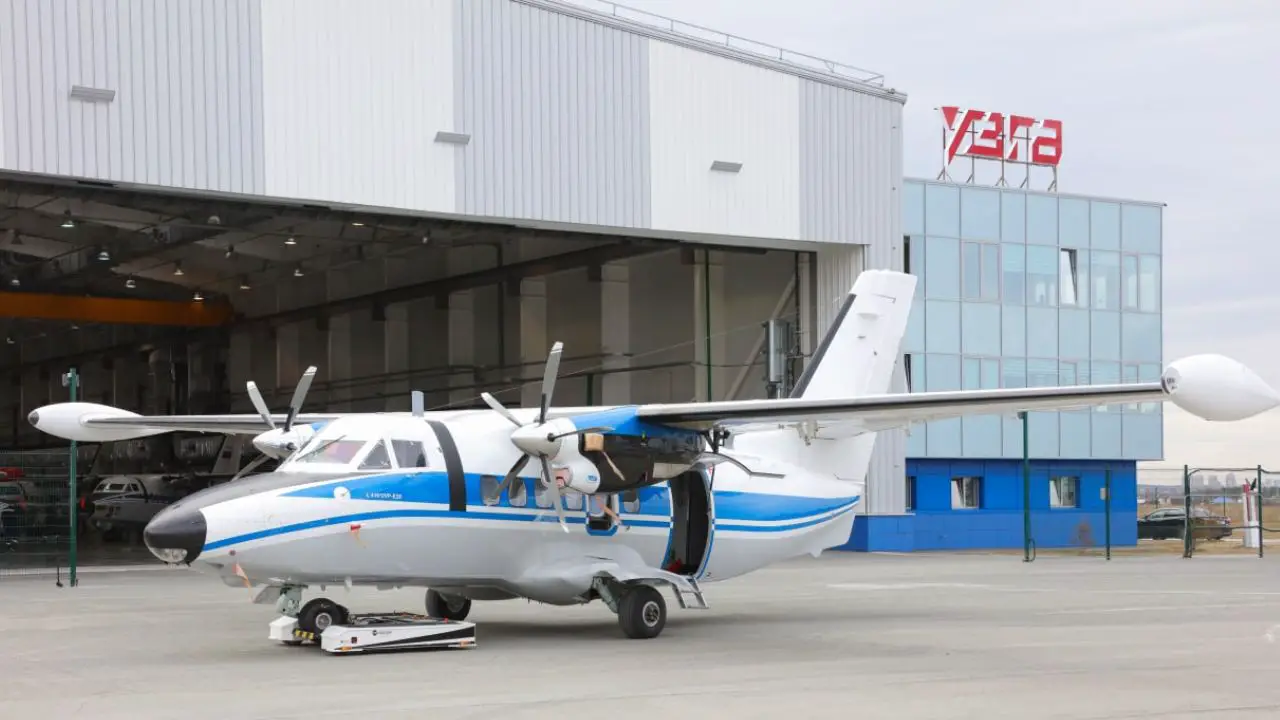The innovation in regional aviation has always been driven by the vastness of Russia’s territory, particularly in Siberia and the Far East, where forests, rivers, and lakes frequently isolate settlements. Two aircraft are at the center of efforts to restore amphibious aviation to a central role as Russia modernizes its fleet for the 21st century: the new LMS-901 Baikal and the existing L-410 UVP-E20.
The L-410 UVP-E20: A Russian Innovation with Czech Origins
The L-410 UVP-E20 is a twin-engine turboprop that was developed in the Czech Republic and has since become a standard in remote air transport worldwide. It has become a favorite across Russia’s frontiers due to its reputation for sturdy build, reliability, and the ability to operate in harsh climates or from short, unpaved stretches.
Modifications to Water Operations are Comprehensive
The L-410 UVP-E20 underwent numerous considerable operational and structural modifications during its conversion to a floatplane. The fuselage was reinforced, which was one of the most critical improvements. The aircraft’s primary load-bearing structure was reinforced by engineers to accommodate the unique loads and stresses that are associated with water operations, particularly during takeoff and landing on waves. Furthermore, the aircraft’s stability and control during aquatic maneuvers were improved by the aerodynamic refinements, which included the addition of endplates to the horizontal stabilizer.
The landing gear compartments were sealed with specialized flaps to prepare the L-410 for water operations. These not only stopped the entry of water into the aircraft but also improved its aerodynamic and hydrodynamic efficacy. The integration of essential marine safety and rescue equipment complemented this attention to waterproofing. The L-410, which is now equipped with floats, is equipped with inflatable life rafts and life vests to ensure the protection of all passengers in the event of a water emergency. These aviation-grade instruments guarantee the safety of both crew and passengers during both routine and emergency operations.
Water Performance
The L-410’s float version shows consistent effectiveness in real-world aquatic environments. It has been certified to take off and land on water with surface waves as high as 0.5 meters, a threshold that is classified as Beaufort scale 2, which is equivalent to moderate breeze conditions that generate small wavelets. This capability renders the aircraft appropriate for operation in the majority of moderately tranquil inland and coastal waters throughout Russia.
Additionally, the aircraft demonstrates exceptional maneuvering capabilities when operating on water. It is capable of floating securely and can be readily towed when required. Its water-based turning radius is exceedingly small, measuring less than 50 meters. This property is particularly useful when operating in compact harbors, along rivers, or near floating piers, where space is restricted. To facilitate these circumstances, onboard systems have been specifically designed or modified.
In terms of operational practicality and passenger comfort, the aircraft facilitates secure and convenient boarding and disembarking through floating dock facilities. The seamless transfer of passengers and cargo is guaranteed by the floatplane’s configuration, which allows for side access while afloat, even in the absence of formal infrastructure such as paved runways or air terminals.
The LMS-901 Baikal: A Step Toward a Russian Amphibious Future
Simultaneously, the “Baikal” (LMS-901)—a new, all-Russian light multipurpose aircraft—is the subject of interest. This aircraft is designed to serve as the next-generation mainstay for regional transport. In 2023–2024, Russian aviation circles deliberated on the feasibility and necessity of converting Baikal into a seaplane as a strategic response to local travel requirements.
Plans for the “Baikal Seaplane”
In mid-2023, Russian aviation experts and industry insiders announced that feasibility studies had begun on a possible seaplane variant of the LMS-901 Baikal. The technical requirements for such an evolution were the primary focus of these studies, which identified critical components of the aircraft that would require adaptation to marine environments. At present, engineers are in the process of assessing the feasibility of replacing the conventional tricycle landing gear system with a more durable float or amphibious landing gear. To guarantee that the Baikal can withstand the stresses of wave interaction and uneven aquatic landings, it is also necessary to reinforce the fuselage’s critical structural elements, particularly the wing-to-float attachment areas.
The Baikal seaplane’s engineering logic and inspiration are largely derived from the successful floatplane modification of the L-410 UVP-E20. The development crew of Baikal is receiving test data and experience from aviation engineers who were involved in the previous project. The design process for Baikal includes the installation of comprehensive emergency and maritime rescue systems, and efforts are currently ongoing to optimize the aircraft’s hydrodynamics to guarantee safe and stable behavior during water-based takeoffs and landings. Additionally, configurations are being investigated that would render the aircraft entirely amphibious, enabling it to operate from both water surfaces and runways, thereby providing operators in regions with mixed terrain with even more flexibility.
It is impossible to overstate the strategic importance of the seaplane variant of the Baikal. The aircraft will provide essential access to isolated communities, industrial areas, and outposts situated near rivers, lakes, or coastlines if it is effective. In regions such as Yakutia, Kamchatka, or the Russian Arctic, where infrastructure is minimal and conditions are harsh, the ability to rely on natural waterways instead of costly and weather-dependent runways is a significant enhancement.
The Evolution of a New Russian Amphibious Era
The revival of Russia’s distinctive approach to connecting its most inaccessible regions is exemplified by the development of amphibious variants of both the L-410 and the new LMS-901 Baikal. The practicality and efficacy of such endeavors have already been demonstrated by the floatplane L-410 UVP-E20, which functions as both a technical reference and operational model.
The Baikal seaplane, currently under development, is expected to provide Russia’s civil aviation with a more powerful, modern, and versatile instrument for bridging geographical gaps and unlocking the vast natural waterways that remain essential for national mobility and economic growth.
Official Website of Youtube Channel – Altitude Addicts
